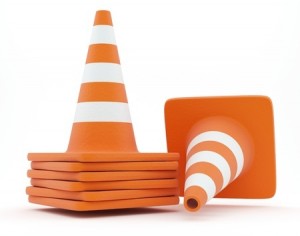
Are you expecting a bundle of joy? Do you find it impossible to keep your kids still for more than a few minutes when on the road?
Driving requires one’s full attention, and while you keep your eyes peeled on the road, the last thing you should have to worry about is the safety of your kids in the passenger seats. The good news is that ensuring optimum safety is easily achievable. All you have to do is ensure that your car’s safety features keeps everyone protected at every stage of your drive, especially when you’re driving under adverse conditions.
Key Safety Features You Should Know About
Here are some key safety features that you should already have in your vehicle. If you don’t, look into getting them installed as soon as possible, for a greater peace of mind.
Securing your child seat
Do you know that one in five child seats are fitted incorrectly? This is cause for concern because incorrectly fitted seats give the false impression that a child remains safe in the seat. ISOFIX, the international standard for installing child seats, introduced in 1997 by the International Organization of Standardization, addresses this issue by providing anchor points as well as making mounting both easy and secure.
Knowing your airbags
You’ve probably seen the letters “SRS” stamped on your car’s dashboard, steering wheel and car frame, but are you aware of how many airbags you have in your car, and where they are located? If you have never considered this before, you might want to do so during your next car shopping trip! Knowing the number of airbags in the car and where they are located to protect you and your passengers from sudden impact is crucial to understanding how safe your car is. For example, look out for strategically located rear seat airbags as these provide an added reassurance of safety for your children.
Keeping a grip on the road
Another important safety factor to consider is whether the car is sufficiently equipped with modern technologies that maximize traction on the roads. There are a number of ways wheels can lose grip or traction on the roads, and when that happens, the vehicle can become hard to control even in a split second.
Innovations such as these work to keep you, your vehicle and your passengers safe:
· Anti-Lock Braking System (ABS) is a quintessential safety feature integral to most cars today. The ABS monitors all four wheels while the vehicle is in motion and prevents traction loss or brake lock up by individually controlling the brake pressure of each wheel. This keeps optimal grip and prevents skidding.
· Vehicle Stability Control (VSC) prevents wheel slip and loss of traction by reducing engine power and applying brake force to the wheels that need it. The system reads data from both a steering wheel sensor and the ABS wheel-speed sensors to determine if the vehicle is following the driver’s steering input. If the vehicle is deviating from the direction in which the driver is steering, VSC reduces engine power and pulses the left- or right-side brakes to help correct the situation.

Navigating hills and slopes
Navigating up and down hills and slopes can be tricky for some drivers because this creates a higher possibility of accidents from the vehicle rolling. Fortunately, features like Hill-start Assist Control (HAC) controls brake pressure to support drivers as they move from brake to accelerator on an incline. On the other hand, the Downhill Assist Control (DAC) helps drivers descend slopes by maintaining vehicle speed at 5km/h to ensure vehicle stability, especially if the surface of the incline is wet or slippery. These two features go a long way in reducing the risk of incidents on inclines.
Reverse sensors & cameras
 Technology today has ensured that peering through rear-view mirrors or sticking your head awkwardly out the window while reversing is yesterday’s news. Proximity sensors let you know how close you are and how much closer you can be to pillars and walls to achieve the perfect park. Rear-view cameras with back guide monitors also provide more direct visual aid for you to park with ease and confidence.
Technology today has ensured that peering through rear-view mirrors or sticking your head awkwardly out the window while reversing is yesterday’s news. Proximity sensors let you know how close you are and how much closer you can be to pillars and walls to achieve the perfect park. Rear-view cameras with back guide monitors also provide more direct visual aid for you to park with ease and confidence.
The Future of Safety on the road
As car features becoming increasingly sophisticated, car safety will continue to be a key focus for car manufacturers like Toyota. If you’re not planning on a new car anytime soon, but considering one in the future, here are some safety features to keep a look out for in the next few years.
Staying on track
Distraction and fatigue are common causes of accidents, especially on busy expressways. With more than a million cars on our roads, we need to ensure we keep within lanes when we’re driving. Toyota’s Lane Keeping Assist Technology is an early warning and corrective system that uses a camera to recognize road markings. When the car begins to veer out of the lane it is in, the system emits a warning light and signal to the driver, while applying a small amount of force to the steering wheel to guide the vehicle back into the lane. The Lane Keeping Assist Technology is an innovative safety measure that works to counteract the side effects of metropolitan living today, keeping you and your passengers safe.
Keeping a look out
While driving, being alert to dangers early gives the driver more time to respond with the appropriate corrective action. While potential situations at the front and rear are fairly easy to spot, dangers in blind spots by the sides are often overlooked. Motorcycles riding on lines and cars veering off their designated lanes are common occurrences and can often be hard to detect while drivers are focused on the road in front. The Blind Spot Monitor system reads information off radar sensors located at the sides of the vehicles and lights a warning signal on the side mirrors to alert the driver about an object approaching from behind.
Similarly, while a car is reversing out of a parking lot, the Rear Crossing Traffic Alert technology uses sensors to monitor for approaching vehicles or objects that are likely to be in the car’s path. Upon detecting such a potential situation, the system will emit a warning sound while flashing lights in the side mirrors to alert the driver, providing the driver with ample time to react and stop the reverse if necessary.
The Blind Spot Monitor and Rear Crossing Traffic Alert are solutions to the visual limitation of blind spots, minimizing the risk of accidents and protecting rear passengers.
Looking further ahead
Driving at night can be daunting on dark roads with limited visibility. The Intelligent Adaptive Front-lighting System (AFS) redirects low-beam headlamp units to match steering direction and vehicular speed, providing the driver with wider visibility when rounding corners. This allows drivers to spot potential obstacles as early as possible and avoid any collisions or last minute swerves.
Fuss-free parking
Even veteran drivers are not immune to potentially costly misjudgements when parking their car. The Intelligent Park Assist greatly reduces the risk of mistakes in any parking situation by controlling the steering wheel to help the driver ease smoothly into his or her indicated parking spot with minimal fuss.






